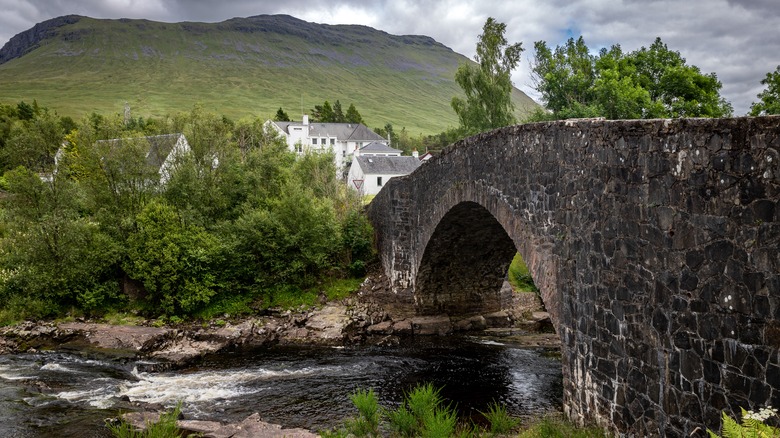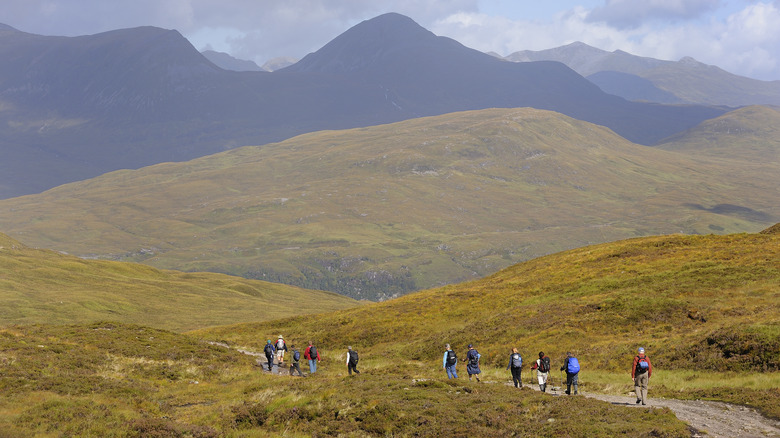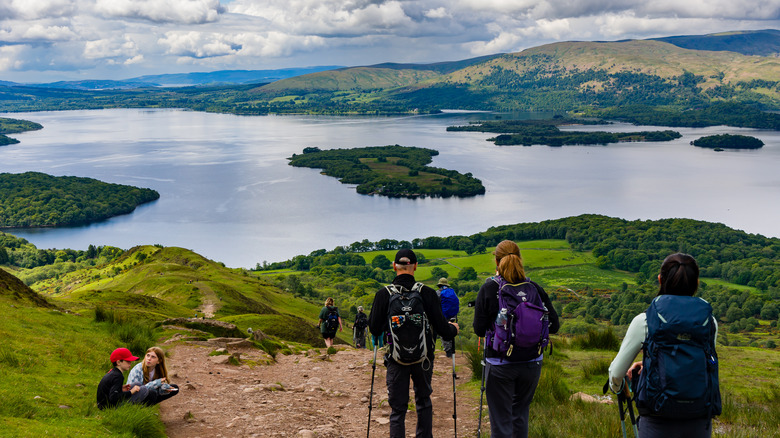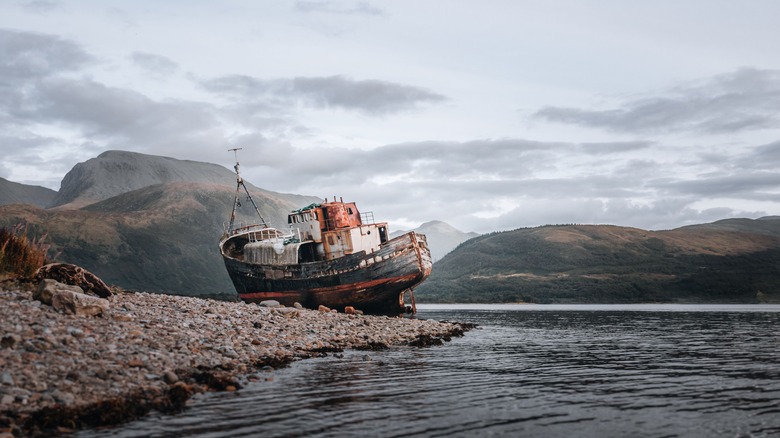Scotland's First Thru-Hike Crosses Breathtaking Lochs, Mountains, And Windswept Moors
The Scots have many different words to describe their land and climate: "ben" is a "mountain" and a "loch" is a "lake." A rock face is known as a "creag," and a pile of stones, known in English as a cairn, recalls the Scotch-Gaelic càrn. While some of us may struggle to describe a tall, jagged hill, in Scotland it's known as a "stob." Passing rains will leave you "drookit" (drenched), and your boots will turn "manky" (dirty) after trudging through mud. All these words describe the haunting, wide-open landscape of the Scottish highlands, with their grass-matted hills, rocky pathways, and alpine peaks lost in clouds.
For backcountry hikers, Scotland casts a powerful spell. These are the lands immortalized in films like "Braveheart" and the novels of Sir Walter Scott, where patches of evergreen forest open onto pale green heath, and narrow tracks seem to extend forever. This primal landscape is one reason the West Highland Way has become one of the most beloved treks in the world, attracting about 45,000 thru-hikers every year. But there are many other reasons travelers may relish this 96-mile traverse; history, hospitality, and strong libations all come together on this journey, which most healthy hikers can complete in six to eight days.
You take the high road
Trails have cut their way through Scotland since time immemorial, but the West Highland Way was a deliberate preservation effort, thanks to Glasgow native Tom Hunter. The Royal Air Force veteran was a lifelong outdoorsman who worried about rampant development around the legendary Loch Lomond; he enjoyed walking through the area with his wife Margaret and imagined connecting the age-old routes that already existed. Integral to this effort was Fiona Rose, an expert geographer who allegedly wore out a pair of boots surveying the land. Many of the unpaved trails were fashioned from centuries-old roads, which once carried horses, livestock, and soldiers. The West Highland Way officially opened to hikers in 1980.
As it happens, the highlands of Scotland and the mountains of the Eastern U.S. essentially grew up together, before the continent of Pangea began to split apart about 200 million years ago. Because of this shared geologic heritage, the West Highland Trail became the first footway in Europe to be designated a part of the International Appalachian Trail, which became official in 2010. The most prominent peak is Ben Nevis, which is near the trail's northern endpoint and one of the three tallest mountains in the U.K.
The biggest, highest, and best
The trail system starts in Milngavie, a town of 14,000. Milngavie is fairly easy to get to, as it stands just a few miles outside of Glasgow, the largest city in Scotland. From there, the West Highland Way blazes northward; the trails cut through Mugdock Country Park, skirt the banks of Loch Lomond, span the 18th-century stone Bridge of Orchy, cross the storybook valley of Kinlochleven and the surrounding Mamores mountains, and terminate at last in the town of Fort William. While the land itself may seem isolated, the route is dotted with villages, and hikers can reach hotels and B&Bs each day of the journey. If you're carrying your own tent, you'll also find several campgrounds along the way.
Note that the weather in Scotland is generally moist and cool, even in the peak season of July and August, and conditions can change on a dime. In short, dress in wicking layers and bring rain gear. It's vital to carry a mobile phone, even when service is patchy. Hikers should plan to pick up a physical map as well, for analog navigation when technical problems arise.
If all this sounds daunting, don't worry: You can hike the West Highland Way in whole in or part, and there are myriad tours — guided and self-guided — many of which are supported, so you don't even have to carry your own baggage. Thirsty travelers should also sample the many distilleries and whisky shops along the way, just as Rick Steves would advise you to.
Enchanted western Scotland
Most thru-hikers complete their journey in Fort William, but the fun doesn't have to end there. This remote town of 11,000 people has become an outdoor sports capital, with nearby skiing and snowboarding, mountaineering on Ben Nevis, and beach strolling on the shores of Lochaber. The surrounding slopes have become popular among mountain bikers, who can use many of the same hiking trails as single track. Indeed, the entire West Highland Way can be legally ridden on two wheels.
One of the most iconic landmarks around Fort William is The Corpach, an old fishing vessel that is permanently grounded on the pebbly surface of Caol Beach. In 2011, a severe storm unmoored The Corpach, and the unmanned ship drifted across Loch Linnhe, where it ran aground and has remained to this day. The ship found itself in a photogenic location, with dark waters all around and the summit of Ben Nevis rising in the background. This is just some of the local lore you'll find in the Western Highlands; if you're keen on Scottish history, here are some of the best museums to visit.



